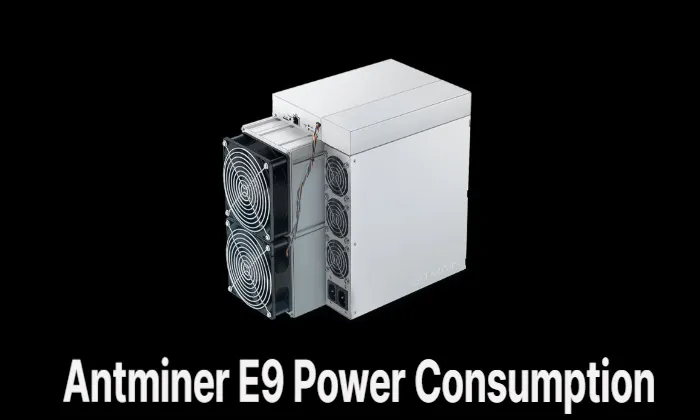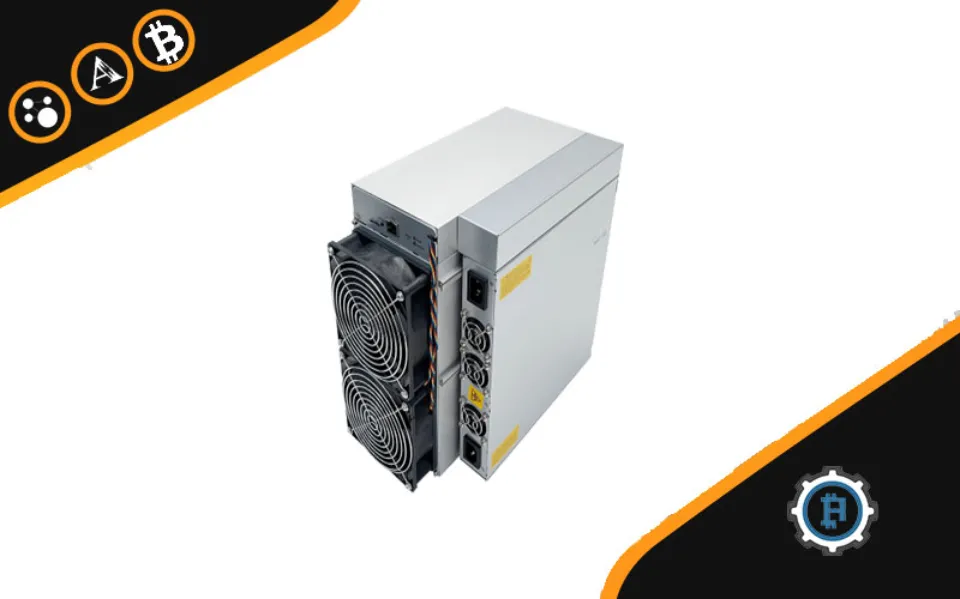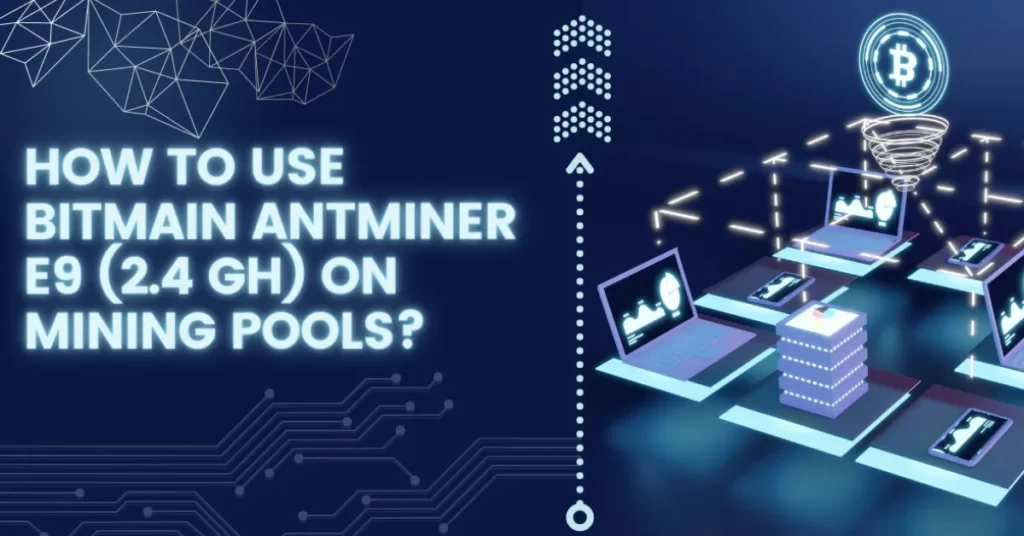Check out this post to get the tutorial and learn more about solo mining if you want to try it with your Bitmain Antminer E9.
If we monitor the development of cryptocurrency mining, we will notice a rapid change in the mining process. It has been ASIC mining from CPU up until now. A fantastic Ethereum Classic ASIC miner, Antminer E9 has a maximum hashrate of 2.4 Gh/s and consumes 1920 W of power. In addition, we can observe the variety of mining techniques that present-day miners employ. There are three types of mining: lone, pool/group, and cloud.
It is true that solo miners have encountered problems with playability. This is a result of the community’s growing competition to provide the best hash-solving power. This crazy competition makes it difficult for solo miners to keep up and thrive. Many people still favor solo mining, though. The majority of mid-sized and low-capital holders are simultaneously engaged in pool mining. Let’s check to see if solo mining with the Antminer E9 is advised.
Table of Contents
What is Solo Mining?
Solo mining is an attempt to confirm blocks of transactions on the blockchain alone, as an individual miner. Alternatively put, solo mining is a method of mining cryptocurrencies without using mining pools.
Pools are groups of miners that act as a single miner on the blockchain. The miners ensure their rewards come in steadily by doing that. All of the miners who take part in the same pool share the rewards.
How Does Solo Mining Work?

The original method of mining was solo mining. Satoshi Nakamoto’s vision was “one CPU, one vote”. You have to actively mine on the blockchain in order to cast a vote. This indicates that every miner on the blockchain is running a separate full node.
The number of rewards per miner decreases over the course of the specified time period because the block reward and block time remain constant while the number of miners rises.
A good example is Bitcoin, where the block reward is 6.25 BTC and the block time is 10 minutes. Every block, or every 10 minutes, if there were just one miner, he or she would win with 6.25 BTC. A second miner (with the same hashrate) would receive 6.25 BTC statistically every 20 minutes or every second block if added. Consider a scenario in which there are 1,000,000 Bitcoin miners. It would statistically take 1 million blocks or 6944 days to win a block.
As demonstrated by the aforementioned example, solo mining on a highly competitive blockchain like Bitcoin is largely dependent on luck. That is why pools emerged soon after the Bitcoin launch. Nov. 2010 saw the debut of the first mining pool. It makes more sense for a miner to have a steady stream of income, even though the rewards might be just a fraction of the total block reward. Otherwise, he or she runs the risk of having to pay operational expenses out of pocket.
It’s crucial to keep in mind that the aforementioned example is only statistically accurate over the long term. A miner who anticipated needing 10 years to confirm a block might actually win one in just one month or even one day. It is extremely unlikely that this will occur. On the other hand, it might take twenty years as opposed to ten. In this case, it all depends on your luck.
The creation of a full node and direct communication with the blockchain are prerequisites for solo mining. Actually, mining pools perform this function. A bitcoin node (or a node for any other cryptocurrency) will be set up by mining pool operators, who will then function as a single miner. The hashing power of this miner will be absurdly high. Even more than 25% of the network’s (the blockchain’s) overall hashrate has been known to occur. 51% attacks are a risk if you control more than 51% of blockchain hashrate.
How to Do Solo Mining With Bitmain Antminer E9?
If you want to mine independently, you need the standard mining hardware and software as well as a wallet where you can store your mined tokens or mining rewards. You decided on the Bitmain Antminer E9 in this instance.
If you want to mine independently, you’ll also need to run a full node, which can consume a lot of energy. This indicates that if you start solo mining, your electricity bill might significantly increase.
However, if you’re deadset to solo mine to your own node from your Antminer E9, you need:
- Setup RPC connection (username and password) on your bitcoind
- Use cgminer or bfgminer stratum proxy to do you local mining, OR
- Setup an open source mining pool
How Much Can I Earn SOLO Mining
Let’s evaluate the suitability of SOLO mining for the Ethash mining algorithm for 12–13 mining rigs with 8 GPUs each. The hashpower of this equipment is approximately. 3000 Visit 2CryptoCalc.com, turn on the Ethash algorithm only, and type 3000 in the Ethash hashrate field. MH/s (= 3 GH/s).
A quick calculation demonstrates that if we are mining Ethereum Classic, our capacities will yield 8.9 ETC coins each day. The block reward in Ethereum Classic is 4 ETC coins (it might be a little less if the block is uncle, but let’s assume we only get standard blocks). In a perfect world (i.e. the average), we would find two blocks daily and collect eight coins. On a bad day, there might only be one block or none at all; on a good day, there might be three or more.
Assume you are SOLO mining MOAC. The daily reward for the calculator is 83 MOAC. In MOAC, a block costs two coins. This means that if you mine SOLO, you discover an average of 41 MOAC blocks per day.
Which alternative, 41 MOAC blocks per day vs. 2 ETC blocks per day, do you believe to be more dependable? Indisputable advantages of MOAC SOLO mining. Even if you find 40, 39, or even 35 blocks, you won’t lose much, so there’s little risk involved. You might, however, end the day with no blocks at all if you mine ETC. ETC, on the other hand, could net you a lot more money if you think you’re lucky. When compared to typical pool mining, finding three ETC blocks per day gives you a significant bonus.
Other Ethash coins like Pirl, MOAC, Metaverse, etc. would work better for you if your hardware’s power is less than 3000 MH/s. If you mine MOAC, for instance, with hashpower of 10,000 MH/s or more, the profit might occasionally be higher. It depends on the difficulty and hashrate of the network. Experienced SOLO miners frequently decide on a particular coin to be mined each day after taking into account a variety of indicators.
Advantages of Solo Mining:
- Being the sole owner of substantial rewards is one of the most important and alluring benefits of solo mining. In pool mining, this is just not feasible. The entire profit will only belong to a solo miner if his equipment discovers the value of a new block earlier than others.
- There are very few opportunities for outages to interfere with solo mining. Furthermore, this might lead to increased uptime.
- Miners who engage in solo mining are not liable for any additional fees. A solo miner actually receives 6.25 Bitcoin plus transaction tax for finding each new block.
- There are more opportunities for solo mining to produce a higher long-term yield. Even more so when we contrast it with pool mining. Additionally, as solo mining eliminates the need to pay a pool fee or transaction fee, rewards increase over time.
- Solo miners are unaffected by pool timeouts in any way. Solo miners can set up a backup pool in this way.
Disadvantages of Solo Mining
- the requirement for significant startup and processing capital for solo mining.
- the possibility of losing all of your reward money at once if another miner or group of miners decide to take part in solving the specific block you are investing your resources in.
- never achieving the same level of processing power as a miner group.
- If miners decide to invest in well-known cryptocurrencies like Bitcoin, there is a high risk of financial loss.
- Income generation is typically more erratic when mining alone.
- Since solo mining only supports network pull, solo miners frequently waste valuable time.
Which Mining is Better: Solo Mining Or Pool Mining
People favor dependability and stability in their financial decisions. In the context of cryptocurrencies, these two ideas are debatable. But it would be safer to earn and trade new cryptocurrency every day than to let your fate hang in the balance for more than five months. Solo mining requires a lot of patience without any assurance of success, even though pool mining involves risk.
It hinges on your preferences and financial situation, though. Go solo mining if you have millions to invest; otherwise, joining a pool would be preferable.
Additionally, all of the well-known cryptocurrencies’ hash complexity is growing quickly. In fact, ETH and BTC have grown 30 and 4 times more difficult to solve in the last year alone. Dash now has hash codes that are 150 times more complex.
The majority of miners knew that mining alone would be nearly impossible even at the beginning of the mining industry. As a result, the majority of them are pool mining, combining the capacities of their equipment. They have been receiving more consistent and equitable rewards as a group.
You can try mining alone with an Antminer E9, but the variance will catch up to you. Your luck fluctuates, going from good one minute to bad the next. Why would you do this to yourself?
I don’t think there’s any reason to solo mine these days because there are so many pools with low fees. Privacy is not an issue because the majority of pools only require an ETC address.
I wouldn’t recommend solo mining ETC.
Analyzing Capital Requirement and Profitability of Solo Mining
In addition, the complexity of the hash rate is increasing to an unbelievable level as a result of the involvement of a large number of participants. Additionally, the likelihood of finding such a unit on your own is extremely slim. Let’s examine the capital requirements for a lone miner to operate in a bitcoin network with a high hash rate of pth per second. To do this, miners will need to keep their farms running at a capacity of about $200,000. Also keep in mind that the price does not cover the cost of supplies and electricity.
With a 95% chance, you will therefore need to work consistently for about 200 days. Then, as a reward, you can discover a block value and receive 12.5 Bitcoin. Noting how large this sum actually is, you will profit from it.
Additionally, this network’s complexity will grow over the next few days. So, to continue the process of discovering new blocks every day, it will be necessary to have almost 100 times more capacity. Millions of dollars in capital investment will be required for the entire process.
Closing Thoughts
In conclusion, solo mining ETC with an Antminer E9 is not advised because the reward is the same as mining on a pool. If I had to solo mine any coin, it would be something like TON or Alephium because these coins have lower mining difficulty.
FAQs
What Can You Mine With An Antminer E9?
Ethereum mining
This summer the most well-known ASIC miner producer Bitmain released the new Antminer E9 device for Ethereum mining. E9 delivers a huge hashing rate of 2 400 MH/s which could be compared to 25 of Nvidia’s high-end RTX 3080 graphics cards
Which Coin is Best for Solo Mining?
If you’re looking for the easiest crypto to mine, check out Monero (XMR), which is one of the best cryptos to mine at home. Ravencoin (RVN), Vertcoin (VTC), and Ethereum Classic (ETC) are additional choices. One of the top GPU-mined coins is Bitcoin Gold (BTG), which is also worthy of mention in this context.



